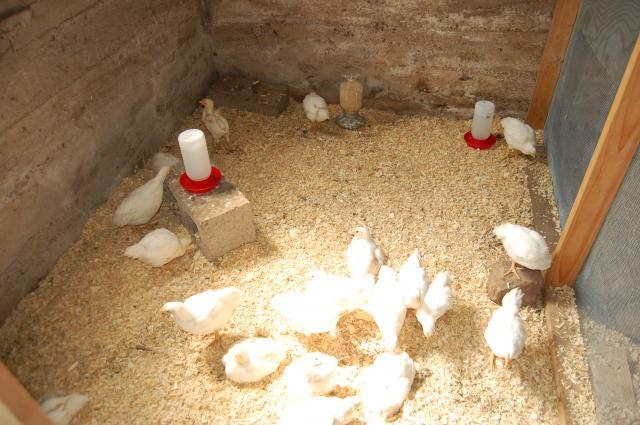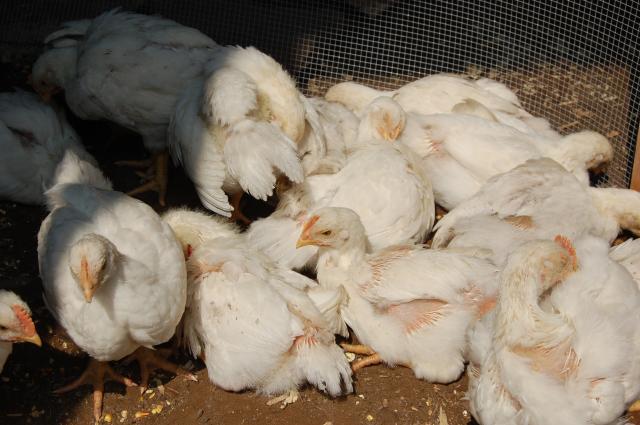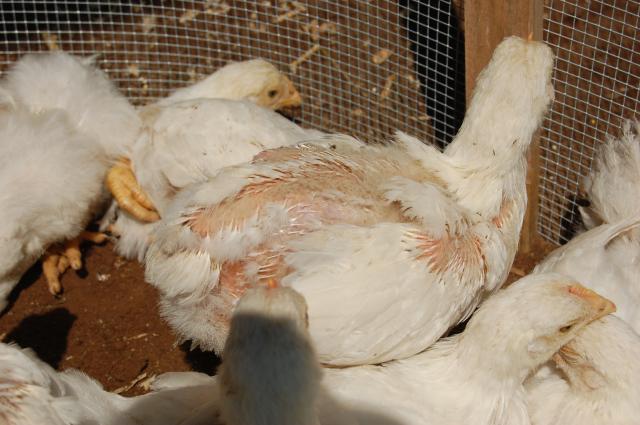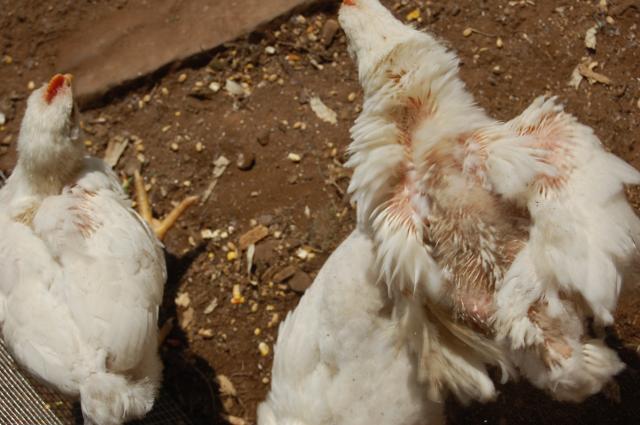My urgency has ramped WAY up this morning. When I went out to care for the birds I found 2 of my chicks dead.
Last night when I went in nobody was roosting .. which seemed odd, but I didn't think much of it. Now I'm assuming it's because of the dead birds tucked into the corner under the roost ....
Okay ... the food is chick starter grower 20%. (brand name Dumor)
I think I'm good there.
The beaks look better today .. maybe the same, but definitely not worse. I have some pictures posted so you can see if it looks familiar.
Definitely no rats.
I'm starting to feel as if things are going wrong on multiple levels and, because I am inexperienced, it's getting hard to keep it all straight, but I am going to try and stay as organized and informative as possible so you guys who really know what you are talking about have clear info. to work with.
I enclosed pictures of the coop when I first put the birds in ... it was just a dirt floor and I threw pieces of sod in each morning so they would have something to peck at. i did this the first three days.
I observed that some of them routinely perched on the roosts while others nested down underneath the roosts. This really bothered me since the birds underneath were getting pooped on.
I also have been observing one bird who's back feathers were missing. Plucked out by itself, someone else, or fell out? I have no idea.
Over the weekend we opened up the run, I took out the pieces of sod and put down pine chips. This was the day I saw the first bird with the beak issue. later that night i saw a couple more birds with sore spots appearing ... not sure why.
Sunday I spent the day stapling chicken wire to the bottom of their roosts so no one could nest underneath.
yesterday spent the day trying to figure out the beak issue. Last night went out at night to observe. No one was roosting. All nesting by the door.
this morning removed everything to clean and refresh it, also removed the roost to spray it off. that's when i found the dead birds.
My first thought was they died because they got stuck. It's a possibility. BUT they are also birds who were missing significant feathers from their back. Maybe they died from illness?
Everyone acts normally, even the birds with feather loss.
I am attaching pictures of the coop with the pine chips, minus the roost because I took it out this morning. Hopefully taking out my makeshift chicken wired roost will get rid of the beak issue.
I also attached pictures of the birds so you could see their 'featherlessness'. it seems as though their skin looks too pink and irritated and now it's more birds. I am getting Sevin this afternoon to put down where they dust bathe. I'm hoping this cures that problem. I guess if they stop pecking at themselves so much I'll know that was it. they looked pretty bad this morning but they were all lifting up their feathers as they bathed so you could see very clearly the base of the feathers.
I also attached 2 pictures of their poo. One is a very healthy looking poo. i have seen an occasional brown pudding poo but not an amount that worries me. I also have a picture of a bird sitting alone who is still got a lot of downy ... I put this picture in so you could see the poo in the bottom left corner ... it doesn't look right. Too runny. First I've really seen like this.
I attached the worst pictures I could find so I could get this diagnosed and get these birds healthy. they are still singing, and talking so happily ... you'd never know they had issues. sigh.
Beaks:
Coop:
featherlessness:
Poo:
I feel so helpless and inexperienced. having 8 birds is a whole lot different than 60!! I am a little overwhelmed, but ready to take it on. Next step is to get the coop bigger ... but I don't want to do that until these issues are resolved.
Thanks!!!
THANK YOU!












